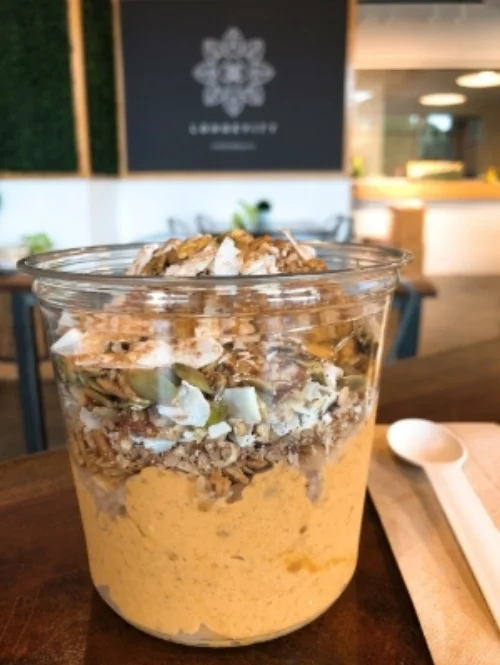Back To The (Nutrition) Basics
Post previously published on, and in collaboration, with E+Rose Wellness Cafe. Edited for reposting purposes.
There’s so much noise to sort through in the health and wellness world. Especially when it comes to nutrition – fast for 18 hours or eat breakfast within 30 minutes of waking up? Almond milk or coconut milk? High fat low carb or low carb high fat? The questions are endless.
If we get back to the basics, listen to our bodies, and do just a little bit of planning, the questions begin to dwindle, and we can start to make sense of what a nutritious diet really looks like.
What does getting “back to the basics” mean?
Focusing on food groups and aiming to have at least 2 food groups at a snack and 3 food groups at a main meal. Combining food groups, instead of solely having one (i.e. just an apple as a snack), can leave us feeling hungry shortly after. The basic formula looks like this: carbohydrate + protein + healthy fat = satisfied
What are the food groups we’re talking about?
Carbohydrates/Starches/Fiber: fruits, vegetables, grains
Protein: soy based products like tempeh and tofu, beans/hummus, lean meats, fish, and eggs
Healthy Fat: nuts, seeds, oils and avocado
Some foods might fit into two categories (i.e. avocado (fruit that contains healthy fat), beans (protein source that also offers carbohydrate), nuts (protein and healthy fat) and quinoa (protein and carb).
Take The Great Pumpkin Bowl at E+Rose Wellness Cafe (above) – we’ve got pumpkin (carb), banana (carb), coconut milk (fat), almond butter (fat, protein), pecans (fat, protein) and some other great additions like cinnamon, nutmeg and vanilla that provide health benefits beyond the “basics”we’re talking about here.
This same formula can be applied to any meal or snack:
Oatmeal (carb) + almond butter (protein, fat) + berries (carb)
Apple (carb) + peanut butter (protein, fat)
Sandwich with whole grain bread (carb) + avocado (fat), hummus (protein, carb), red pepper slices (carb) + hemp seeds (protein, fat)
Combining food groups can be really important for not only staying satisfied but for nutrient absorption as well. For example, foods containing fat-soluble vitamins – vitamins A, D, E and K – are better absorbed when you have a source of fat with them. So, those carrot sticks need a fat source in order for the vitamin A to be absorbed. Similarly, iron, especially iron found in non-animal sources (aka non-heme iron) are typically absorbed better when paired with a source of vitamin C. For example, adding red peppers to your spinach salad can help maximize the absorption of iron from spinach (more on this at a later date as this is well beyond the “basics!”).
How can you use the carb + protein + healthy fat formula to order at your favorite restaurant or plan out your next meal/snack? Check out my Cashew Cream Pumpkin Mac ‘n Cheese for some inspiration!
Questions/comments? I would love to hear from you @TheWellFedGuide!

